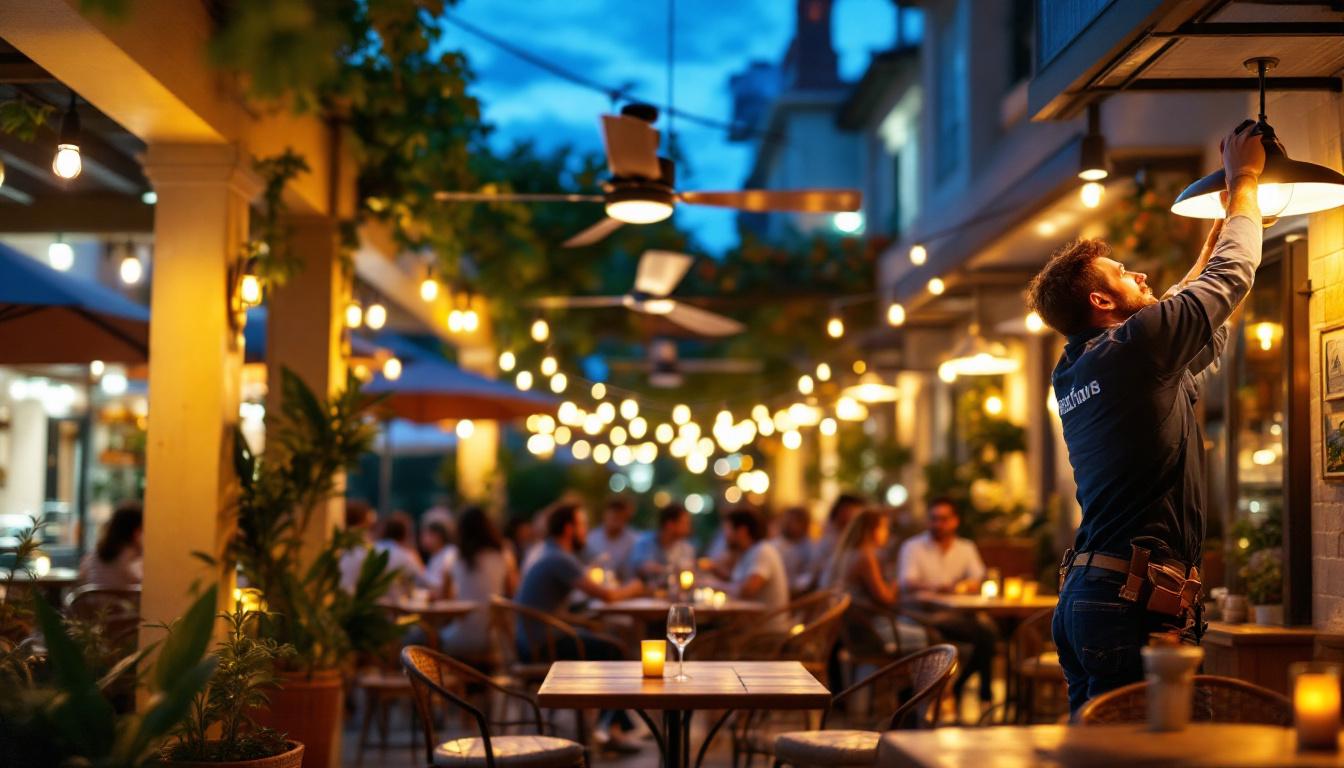
In recent years, LED tube lights have emerged as a transformative force in the lighting industry. Their efficiency, longevity, and versatility have made them a preferred choice for various applications, from commercial to residential settings. As the demand for sustainable and cost-effective lighting solutions continues to rise, understanding the significance of LED tube lights becomes essential for lighting contractors and industry professionals.
The journey of lighting technology has seen significant milestones, from incandescent bulbs to fluorescent lights, and now to LED solutions. Each phase has brought about improvements in energy efficiency, lifespan, and environmental impact. LED tube lights represent the latest advancement, combining the best features of previous technologies while addressing their shortcomings.
One of the most compelling advantages of LED tube lights is their energy efficiency. Compared to traditional fluorescent tubes, LEDs consume significantly less power while providing the same, if not better, illumination. This reduction in energy consumption translates into lower electricity bills for businesses and homeowners alike.
Moreover, the longer lifespan of LED tube lights—often exceeding 25,000 hours—means fewer replacements are needed. This not only reduces maintenance costs but also minimizes waste, aligning with the growing emphasis on sustainability in the lighting industry. The durability of LEDs also means they are less prone to breakage, making them a safer choice in high-traffic areas or environments where traditional bulbs might be at risk of damage.
As awareness of environmental issues grows, so does the need for eco-friendly lighting solutions. LED tube lights are free from hazardous materials like mercury, commonly found in fluorescent tubes. This characteristic makes them safer for both users and the environment.
Additionally, the energy efficiency of LED lights contributes to a reduction in greenhouse gas emissions. By choosing LED tube lights, lighting contractors can play a crucial role in promoting sustainable practices within the industry. Furthermore, the ability of LED technology to be integrated with smart lighting systems allows for even greater energy savings. These systems can adjust brightness based on occupancy or natural light levels, further optimizing energy use and enhancing user comfort. As cities and businesses increasingly adopt smart technology, the role of LED lighting will undoubtedly expand, paving the way for a more intelligent and sustainable future in lighting design.
LED tube lights are versatile and can be used in a variety of settings, making them an attractive option for contractors. Their adaptability allows them to fit into numerous applications, from office spaces to industrial environments.
In commercial settings, LED tube lights are increasingly being installed in offices, retail stores, and warehouses. Their bright, even illumination enhances visibility and creates a more inviting atmosphere for customers and employees alike. Furthermore, the ability to dim LED lights allows for customizable lighting solutions that can adapt to different tasks and moods.
Additionally, many businesses are now prioritizing energy-efficient solutions to reduce operational costs. By replacing outdated lighting systems with LED tube lights, companies can achieve significant savings on their energy bills. The longevity of LED technology also means less frequent replacements, which translates to lower maintenance costs and less disruption in the workplace.
Moreover, the color temperature of LED tube lights can be tailored to suit various environments. For instance, cooler white lights are often preferred in workspaces to enhance concentration and productivity, while warmer tones may be more suitable for retail settings, creating a cozy and inviting ambiance that encourages customers to linger longer. This versatility not only enhances the functionality of the space but also contributes to the overall aesthetic appeal.
Homeowners are also embracing LED tube lights for their energy efficiency and modern aesthetics. These lights can be installed in kitchens, garages, and basements, providing ample illumination while enhancing the overall look of a space. The sleek design of LED tubes makes them a perfect fit for contemporary home decor.
Moreover, the growing trend of smart home technology has led to the development of smart LED tube lights, which can be controlled remotely. This feature adds convenience and flexibility, allowing homeowners to adjust lighting based on their preferences and schedules. With integration into home automation systems, users can set schedules, create lighting scenes for different occasions, and even control their lights via voice commands, making it easier than ever to manage their home environment.
In addition to their aesthetic and functional benefits, LED tube lights are also a safer choice for residential use. Unlike traditional fluorescent tubes, which can contain hazardous materials like mercury, LED lights are free from toxic substances, making them a more environmentally friendly option. This aspect is particularly appealing to eco-conscious homeowners who are looking to reduce their carbon footprint while still enjoying high-quality lighting solutions.
For lighting contractors, understanding the installation process and compatibility of LED tube lights with existing fixtures is crucial. Many LED tubes are designed to be direct replacements for traditional fluorescent tubes, making the transition seamless.
There are primarily two types of LED tube lights: Type A and Type B. Type A LED tubes are designed to work with existing fluorescent ballasts, making installation straightforward. However, Type B LED tubes require a direct connection to the power supply, eliminating the ballast altogether. This option can lead to higher energy efficiency but may require more extensive installation work.
Contractors must evaluate the existing lighting systems and determine which type of LED tube light is most suitable for their clients. Understanding the pros and cons of each type can help in making informed decisions that meet both performance and budgetary needs.
In addition to direct replacements, there are retrofit options available for contractors looking to upgrade older fixtures. These retrofit kits allow for the installation of LED technology in existing fluorescent fixtures, providing an economical solution for businesses looking to modernize their lighting without a complete overhaul.
By offering retrofit solutions, contractors can cater to clients who may be hesitant to invest in new fixtures while still providing them with the benefits of LED technology.
The future of LED tube lights looks promising, with ongoing advancements in technology and design. As manufacturers continue to innovate, the performance and capabilities of LED lights are expected to improve, further solidifying their place in the lighting industry.
As smart home technology becomes more prevalent, the integration of LED tube lights with smart systems is likely to gain traction. This integration allows for enhanced control over lighting, including features like scheduling, remote access, and energy monitoring. Contractors who stay ahead of these trends will be well-positioned to meet the evolving needs of their clients.
Furthermore, the ability to connect LED tube lights to smart home ecosystems can lead to increased energy savings and improved user experience, making them an even more attractive option for consumers.
Customization options for LED tube lights are also expanding. Manufacturers are now offering a variety of color temperatures, brightness levels, and even tunable white options that allow users to adjust the light’s color based on their needs. This level of customization enhances the versatility of LED tube lights, making them suitable for a wider range of applications.
As design trends shift towards more personalized and aesthetically pleasing lighting solutions, contractors can leverage these options to provide tailored solutions that meet the specific preferences of their clients.
While LED tube lights offer numerous benefits, there are challenges and considerations that lighting contractors must address. Understanding these factors can help in making informed decisions and providing the best solutions for clients.
One of the primary challenges associated with LED tube lights is the initial investment. Although the long-term savings are significant, the upfront cost of LED technology can be higher than traditional lighting options. Contractors need to effectively communicate the long-term benefits to clients to justify the initial expenditure.
Offering financing options or incentives can help ease the transition for clients who may be hesitant to invest in LED technology. By highlighting the potential return on investment, contractors can encourage clients to make the switch.
As the market for LED lighting continues to grow, so does the number of manufacturers and products available. However, not all LED tube lights are created equal. Contractors must ensure that they are sourcing high-quality products that meet industry standards.
Researching reputable manufacturers and understanding product specifications can help contractors avoid low-quality options that may lead to dissatisfaction or premature failure. Building relationships with trustworthy suppliers is essential for maintaining a high standard of work.
LED tube lights are quickly becoming a cornerstone of modern lighting solutions, offering energy efficiency, versatility, and sustainability. For lighting contractors, understanding the growing importance of these lights is vital for staying competitive in the industry. By embracing the benefits of LED technology, addressing challenges, and staying informed about trends, contractors can provide exceptional service and innovative solutions to their clients.
The shift towards LED tube lights is not just a trend; it represents a fundamental change in how lighting is approached. As the industry continues to evolve, those who adapt and invest in LED technology will undoubtedly lead the way in shaping the future of lighting.
Ready to lead the charge in the lighting revolution with LED tube lights? At LumenWholesale, we provide lighting contractors like you with the highest quality, spec-grade LED lighting products at prices that can’t be beaten. Say goodbye to local distributor markups and hello to our extensive selection that meets rigorous industry standards. With free shipping on bulk orders, LumenWholesale is your go-to source for premium lighting solutions that combine quality, affordability, and convenience. Elevate your lighting projects and discover wholesale lighting at the best value today.

Discover the ultimate guide to LED tape dimmers with our essential checklist tailored for lighting professionals.

Discover essential tips to avoid common Mercury Vapor Lamp Ballast mistakes.

Discover how lighting contractors are transforming spaces with commercial outdoor ceiling fans.

Discover how electrical pull strings can revolutionize your lighting projects.